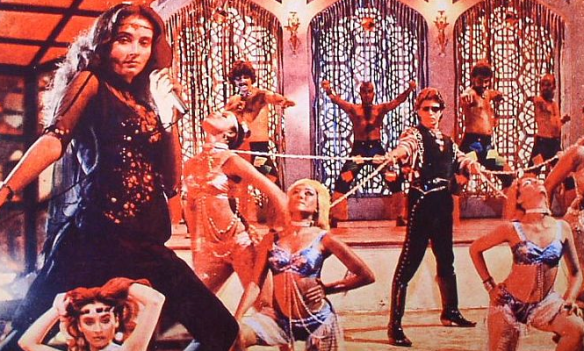
Bansal Trio
I can’t get enough of this one. Its been on Plex pretty much non stop all weekend. And I’ve got it downloaded for my upcoming road trip (10 days each in Papua New Guinea and Vietnam) so it will calm me and settle me in what are always stress filled occasions.
The last post featured violin played by one of the undisputed masters of the instrument (East or West), Dr. L. Subramaniam. As many of you would know the violin has mainly featured in south Indian classical (Carnatic) music. This recording of the Bansal Trio of Norway is the first use of the instrument in a Hindustani classical (khyal) setting that I’ve come across. And it is stunning.
Harpreet Bansal is a Norwegian violinst of Indian Sikh origin and the leader of a number of musical outfits that explore the shared territory of jazz and western and Indian classical music. One hesitates to use such a controversial word as ‘fusion’ but there is no doubt that Bansal has found a wonderful way to blend (perhaps a more palatable word) the several traditions.

Harpreet Bansal
Here is what her record company, Jazzland, has to say about this recording.
Bansal herself has had an outstanding career to date, working with many outstanding performers in both eastern (Ustad Sharif Khan, Tariq Khan, Sukhvinder Singh Namdari, Shabaz Hossein, and Rafaqat Ali Khan) and western (Unni Løvlid, Poing, The Source, Per Oddvar Johansen, Stian Carstensen, Nils Olav Johansen, Ingebjørg Bratland, Steinar Ofsdal, and Morten Halle) musical traditions. Her expressive, technically elegant style joyfully traverses boundaries of genre and historical tradition with graceful ease. Vojtěch Procházka also has a fine pedigree as one of the foremost young Czech pianists, and a CV that includes Ivar Grydeland, Per Oddvar Johansen, Kari Rønnekleiv, Espen Reinertsen, Ingar Zach and Kim Myhr. Andreas Bratlie is a drummer and percussionist who has quietly forged his career, and has worked with many artists, notably Andreas Ljones, Bertine Zetlitz, Mira Craig, and Noora Noor. On this recording, he also brings elements of voice alongside his superb table and percussion work.
The music exposes varied moods of light and shade, serenity through to agitation, and a degree of hinted spirituality amid urban humdrum automatism. The extended piece, Bhairavi,- a traditional piece arranged and interpreted by the group, stands as a monolithic centrepiece, both in scale and variation, while the rest of the album features various meditations upon traditional pieces, as well as three original compositions.
What I love about Chandra (moon or lunar, in Sanskrit) is how well the Indian and the Western work together. Her pianist Vojtech Prochazka takes the basic scales of each raga but plays them with a flow and cohesion that is entirely western. And Bansal is able to make her violin keep pace, by turns supporting and leading the mesmerising dance. Andreas Bratlie on tabla provides solid, tasteful meter. If one was looking for nits to pick one could argue that with the exception of Track 4 (Puria Dhanshri) the compositions are rather laid back and don’t truly explore new combinations and possibilities of sound. But I don’t think that is the point. It is not so much about breaking new ground but the flow of communication between the trio that makes this music stand out from the crowd.
And as much as the interplay between the three is spectacular, Bansal’s solos simply shimmer like quicksilver. I’m immediately reminded of the singing of Kishori Amonkar for the way in which the sound seems to sit on the ear so lightly and delightfully.
In any case, this is really top notch music. Label it anyway you like, but I bet you’ll not come away unmoved.

Track Listing:
01 Charukeshi
02 Malkauns
03 Bhairavi
04 Puria Dhnasri
05 Kripavati
06 Mora Saiyan













